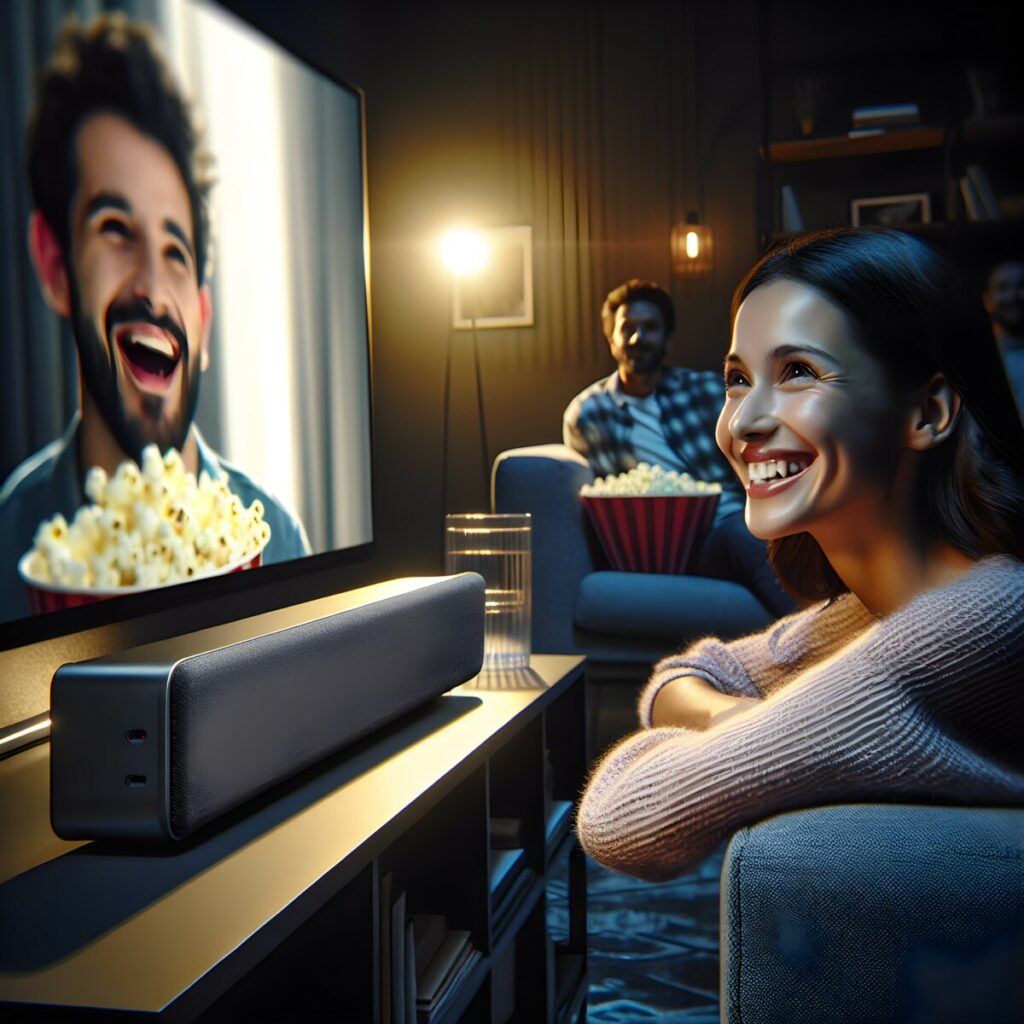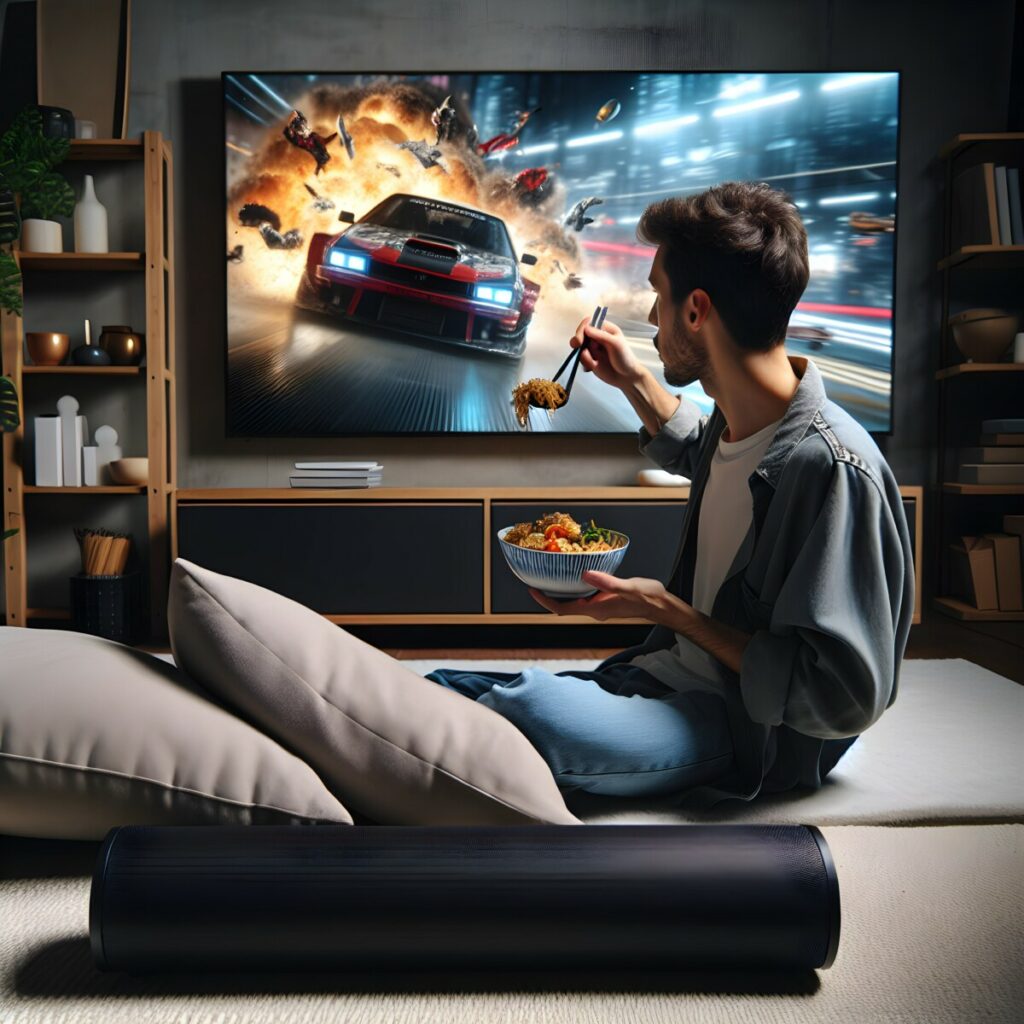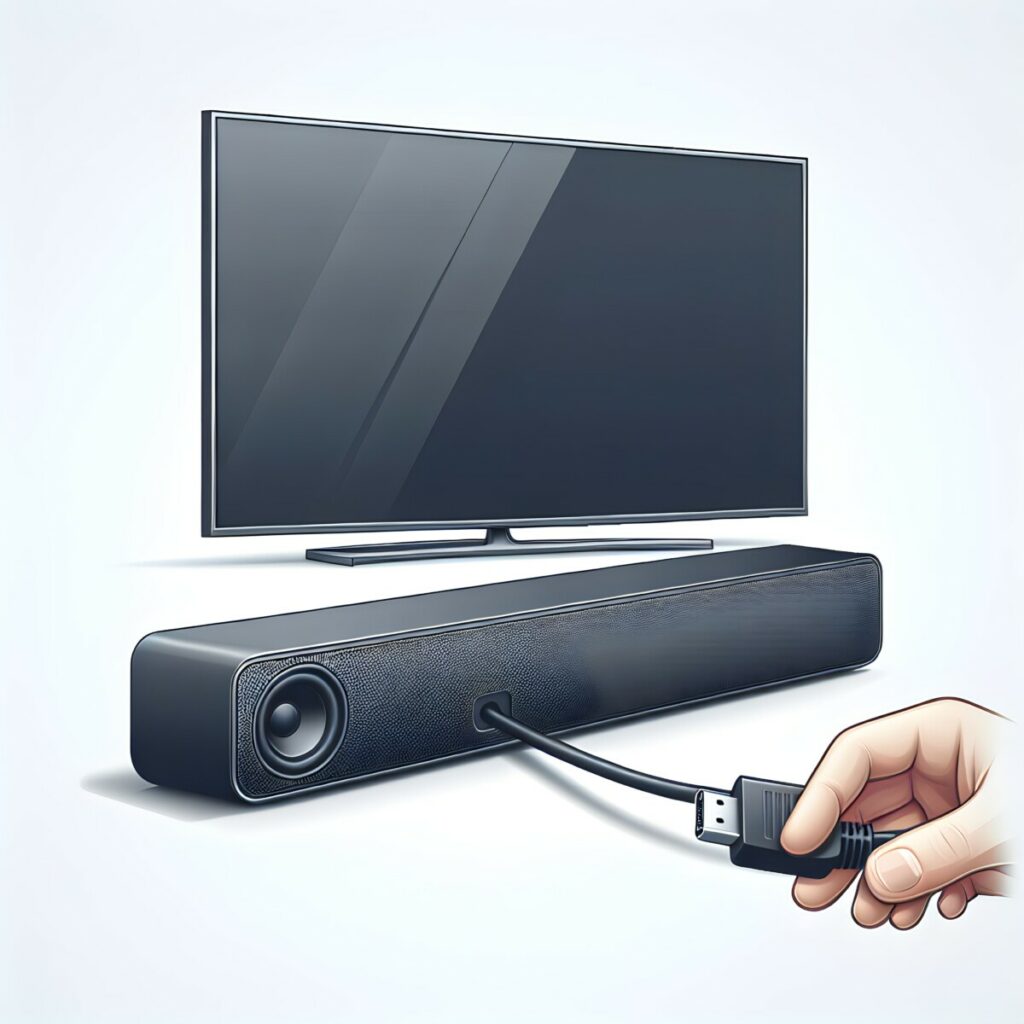As an Amazon Associate I earn from qualifying purchases
A lot of modern Home Theater setups have the soundbar directly beneath the TV to align the audio source with what’s taking place onscreen, thereby creating an immersive audio-visual experience.
Placing a soundbar to the side of your TV is generally discouraged. Such a positioning could result in an audio experience that seems unnatural.
Sound quality is designed to emanate from a specific direction — having the sound originate from the side can disrupt the expected alignment of the audio with the on-screen action.
This misalignment may cause your brain to perceive the sound as out of sync, making it difficult to achieve the desired cinema-like surround sound effect.
If you have limited space in your living space then I recommend getting a more slim/compact soundbar like a Roku stream bar (affiliate link).
Optimal Soundbar Positioning: Never Place it on its side!

When positioning your soundbar, it is crucial to maintain the integrity of the sound by avoiding any orientation that could impair audio quality.
Specifically, placing a soundbar on its side can drastically affect its performance.
Importance of Center Alignment
To ensure that your soundbar delivers the best sound quality, align it centrally to your TV.
This alignment allows sound waves to reach your ears evenly, delivering a clear and balanced audio experience.
When a soundbar is placed to the side, it disrupts the stereo image and can cause dialogue and sound effects to emerge misaligned from the screen content.
Alternative Placement on Furniture
If wall mounting is not feasible, placing your soundbar on the TV stand directly below or above the TV is the next best option.
Furniture placement allows the Dolby Atmos technology and upward-firing speakers to perform optimally, reflecting sound off the ceiling for an immersive experience.
Inadvisable Soundbar Locations

Certain locations can diminish the clarity and overall acoustic performance of your soundbar.
The Downside of Floor Placement
Placing your soundbar on the floor might seem convenient, but this can severely compromise its audio performance.
Sound traveling directly along the floor can result in muffled and uneven audio.
For optimal sound, it’s imperative to avoid the floor and place the soundbar closer to ear level.
Ceiling and Above: Why It Doesn’t Work
Installing your soundbar at ceiling level or above the TV may lead to a disconnect between the visuals and the audio.
This setup can disrupt the ideal soundstage, causing the audio to feel detached from the on-screen action.
Surround sound acoustics are designed to immerse you, a goal that ceiling placement does not achieve.
Avoiding Placement Behind the Listener
Finally, never place your soundbar behind you.
This contradicts your soundbar’s engineered purpose for frontal audio projection.
The design caters to a forward-facing sound dispersion pattern, meant to create an audio experience that integrates with what’s on screen, not from behind.
The Technical Aspects of Soundbar Setup

Wall-mounting your soundbar is a popular choice, which aligns the speakers with the center of the TV screen.
This setup pairs well with wall-mounted TVs, ensuring a tidy appearance with minimal cable visibility.
For cable management, utilizing wall channels can help hide Soundbar Wires and power cords, giving your setup a cleaner look.
If you decide to place your soundbar on a piece of furniture, like a media console, you might need an extended HDMI cable (affiliate link) if the distance from the TV increases.
Just make sure the HDMI cable is compatible with your soundbar and you are getting the best one available.
Here’s a quick checklist for a hassle-free installation when distance is a factor:
- Measure: Determine the distance between the TV and the soundbar placement area.
- Cable Length: Obtain an HDMI cable that comfortably covers the distance with some slack.
- Input/Output: Ensure your TV’s HDMI ARC (Audio Return Channel) is connected to the soundbar’s HDMI ARC, allowing for audio signal and control commands through a single wire.
For wireless connection, if your soundbar supports Bluetooth, you can eliminate physical cables entirely.
However, note that a wired connection like HDMI often provides the best sound quality.
When it comes to sound quality, disabling your built-in TV speakers is advisable, as the soundbar will replace them as the primary audio output.
The soundbar’s dedicated drivers are engineered to deliver a superior audio experience compared to the TV’s own speakers.
Frequently asked questions
Does soundbar placement matter?
Yes, soundbar placement does matter for optimal audio performance. Placing the soundbar in an ideal position can enhance sound quality and your overall listening experience. Ideally, it should be centered under or above the TV, at ear level when seated, and unobstructed by objects that could block or muffle sound. Experiment with placement to find the position that provides the best sound quality in your room.
How close does a soundbar need to be?
There isn’t a strict rule for how close a soundbar needs to be to the TV, but generally, it should be positioned relatively close for optimal audio synchronization and clarity. Placing it directly beneath or above the TV, within a few inches to a foot, is common. However, the exact distance can depend on factors like the size of the room, the soundbar’s design, and personal preference. Experiment with placement to find the ideal distance that works best for you.
Should soundbar be wider than TV?
It’s not necessary for the soundbar to be wider than the TV, but it can be aesthetically pleasing and may offer some acoustic benefits depending on the design. Matching the width of the soundbar to the TV can create a balanced look, especially if they’re both centered on the same piece of furniture. However, sound quality and placement considerations are typically more important factors to consider when choosing a soundbar, rather than its width in relation to the TV.


